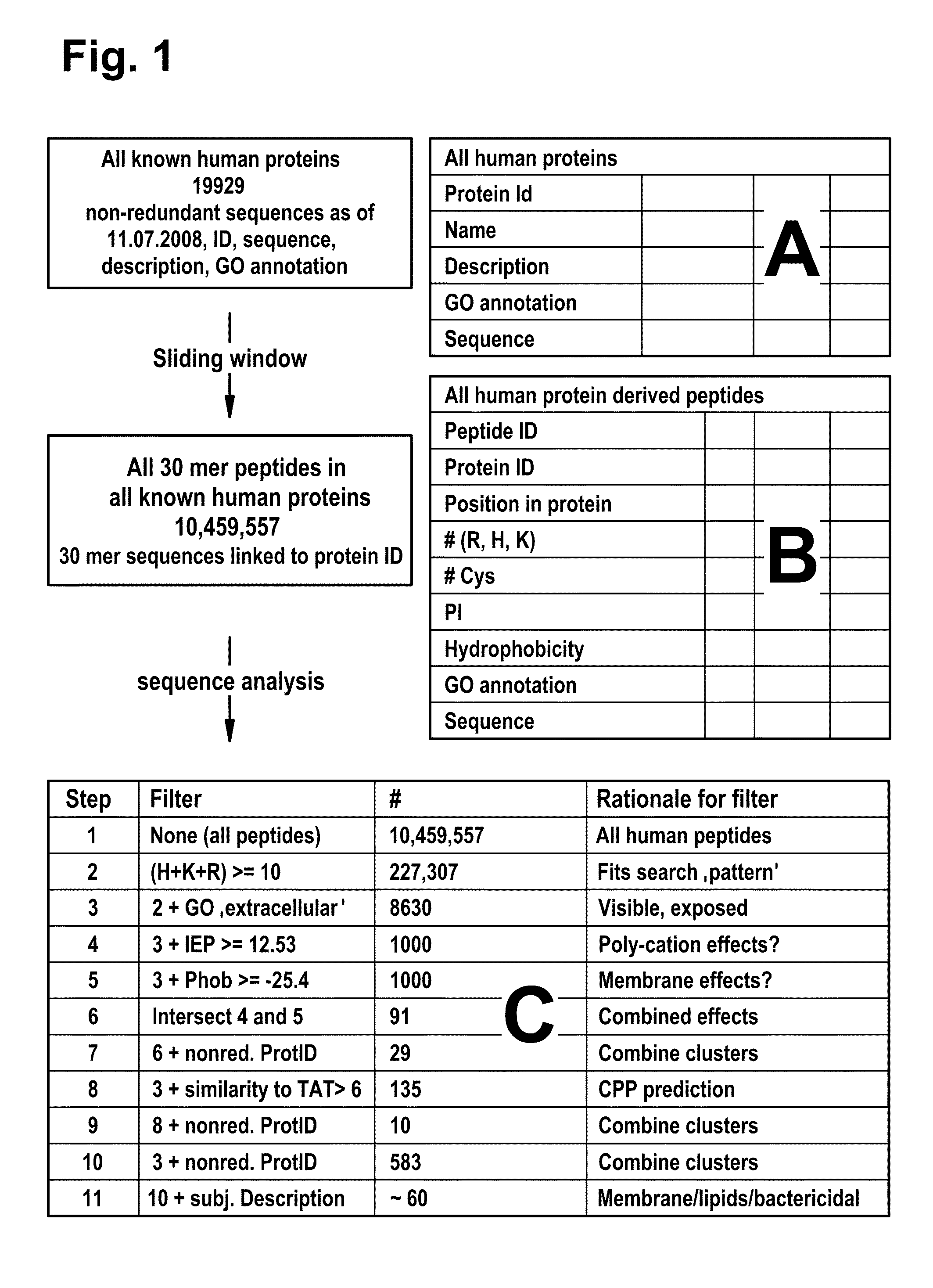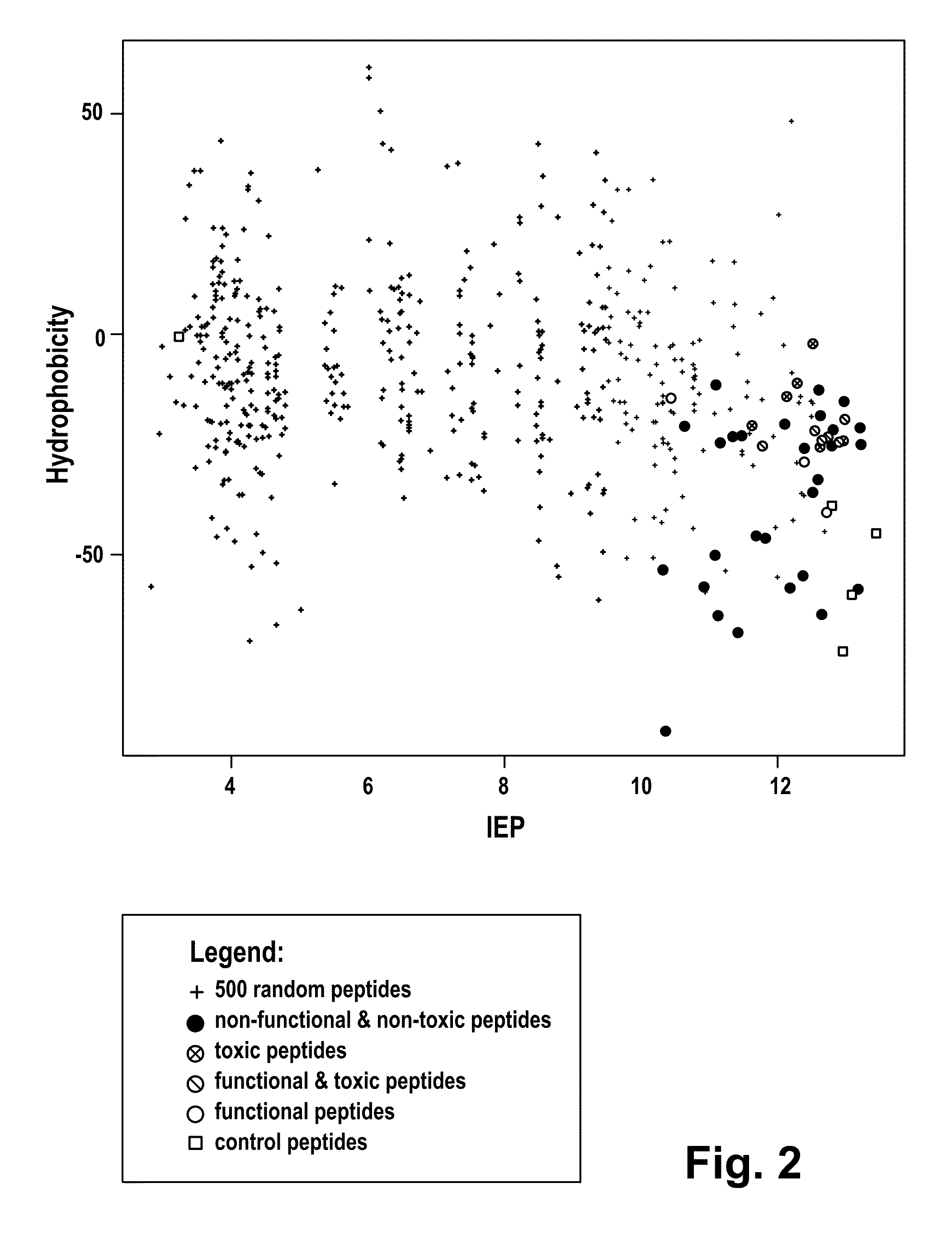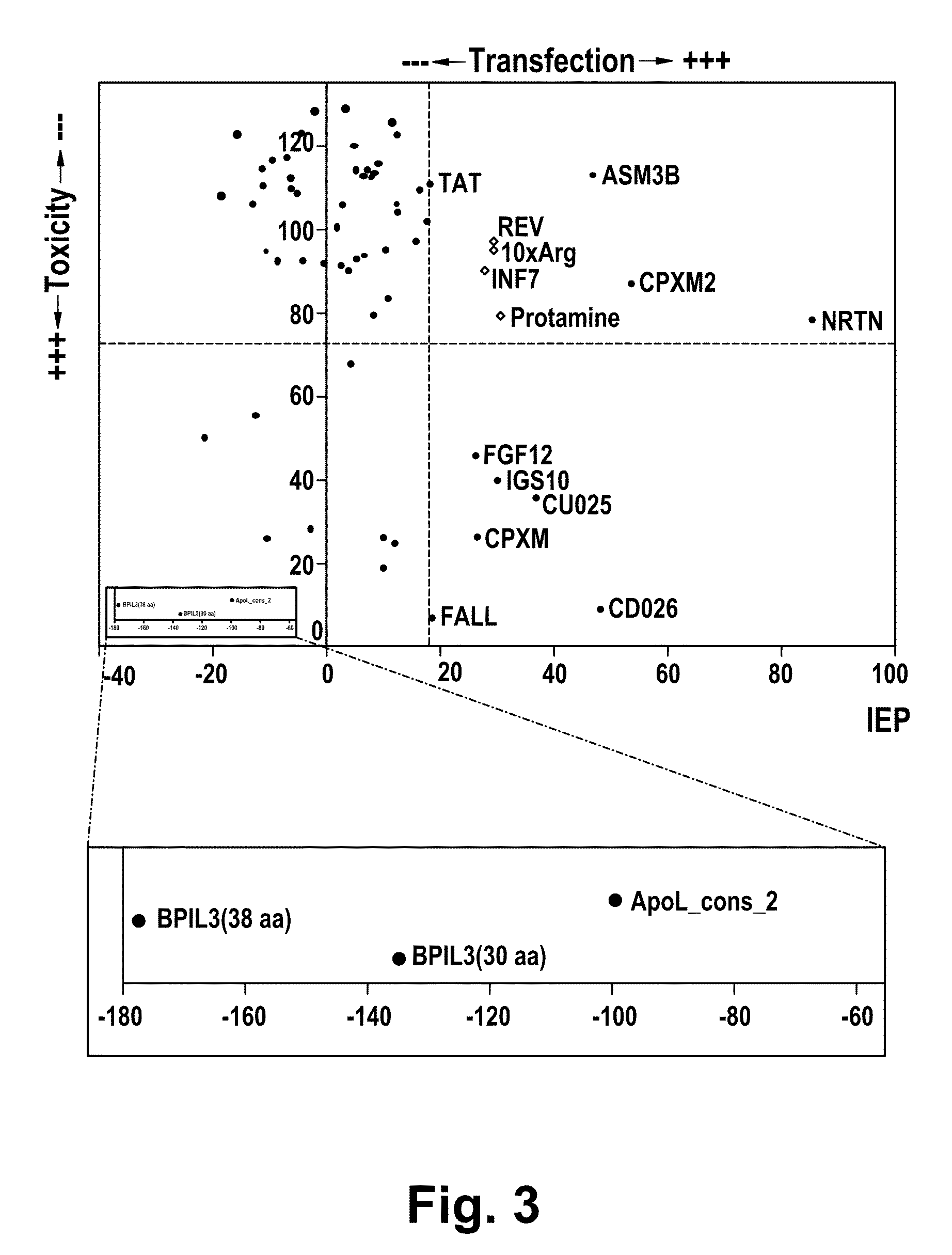Cell-penetrating peptides and uses thereof
a cell-penetrating peptide and cell-penetrating technology, which is applied in the field of identification and functional characterization of human cell-penetrating peptides, can solve the problems of preventing the efficient delivery of drugs or other therapeutically active agents to cells, hammering the targeted delivery of therapeutic substances, and reducing the requirement of targeted delivery
- Summary
- Abstract
- Description
- Claims
- Application Information
AI Technical Summary
Benefits of technology
Problems solved by technology
Method used
Image
Examples
example 1
Materials and Methods
1.1 Mammalian Cell Culture
[0190]MCF7 cells were seeded at a density of 15.000 cells per well in 96 well plates. The cells were incubated for 24 hours at 37° C., 5% CO2 and 85% humidity in RPMI 1640 medium supplemented with 10% FCS (fetal calf serum) and L-glutamine. For functional assays, the cells were washed in OptiMEM medium and RPMI 1640 was replaced with OptiMEM (all reagents were purchased from Invitrogen Corporation, Carlsbad, Calif., USA). Complexes of siRNAs and peptides were formed by incubation of 100 nM siRNA with the indicated peptide concentrations in OptiMEM for 30 minutes at room temperature. The complexes were added to the cells and incubated for 3 hours. Subsequently, OptiMEM was replaced with normal RPMI 1640 growth medium. The cells were incubated for further 21 hours for generating bDNA lysates, and for further 45 hours for performing CellTiter-Glo or CytoTox-Glo assays (cf. below).
1.2 Quantification of mRNA Levels
[0191]For the quantificatio...
example 2
Identification of Potential Human CPPs
2.1 Bioinformatics Approach
[0199]One group of cell-penetrating peptides (CPPs), exemplified by the HIV derived TAT (Frankel, A. D. and Pabo, C. O. (1988) Cell 55, 1189-1193; Vives; E. et al. (1997), supra) and the model peptide Poly-arginine (Wender, P. A. et al. (2000) Proc. Natl. Acad. Sci. USA 97, 13003-13008; Futaki, S. et al. (2001) J. Biol. Chem. 276, 5836-5840), is characterized by a high content of positively charged amino acids. Other CPPS, so called tilted peptides, are composed of both charged, hydrophilic stretches and uncharged lipophilic stretches of amino acids (Lins, L. et al. (2008) Biochim. Biophys. Acta 1778, 1537-1544). It is thus tempting to speculate that CPPs should have both of these characteristics. To identify such sequences in the human proteome a bioinformatics approach was employed. FIG. 1 depicts a schematic illustration of the workflow used to generate candidate lists of peptides.
[0200]To generate a library of pept...
example 3
Screening for Peptides Mediating siRNA Transfection
[0209]In order to analyze the potential CPPs for their ability to transfect siRNA into mammalian cells an increasing peptide concentration (from 1 μM to 20 μM) was employed along with a constant siRNA concentration (100 nM). This range of peptide concentrations was used as it had been shown that positively charged peptides such as TAT are internalized into cells in ranges up to 10 μM and remain in intracellular membrane compartments without significant egress into the cytosol (Duchardt, F. et al. (2007) Traffic 8, 848-866). Only above a threshold of about 5-10 μM these peptides were shown to egress into the cytosol. A concentration of 10 nM siRNA is in the saturation range as determined in control experiments using the DharmaFECT transfection reagent (Dharmacon, Inc., Lafayette, Colo., USA; data not shown).
[0210]The siRNA oligonucleotides employed were directed against human Aha1 mRNA (Panaretou, B. et al. (2002) Mol. Cell 10, 1307-...
PUM
 Login to View More
Login to View More Abstract
Description
Claims
Application Information
 Login to View More
Login to View More - R&D
- Intellectual Property
- Life Sciences
- Materials
- Tech Scout
- Unparalleled Data Quality
- Higher Quality Content
- 60% Fewer Hallucinations
Browse by: Latest US Patents, China's latest patents, Technical Efficacy Thesaurus, Application Domain, Technology Topic, Popular Technical Reports.
© 2025 PatSnap. All rights reserved.Legal|Privacy policy|Modern Slavery Act Transparency Statement|Sitemap|About US| Contact US: help@patsnap.com



